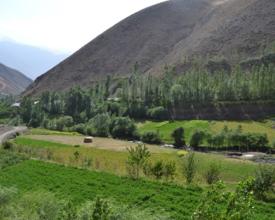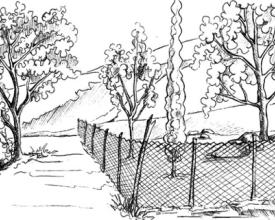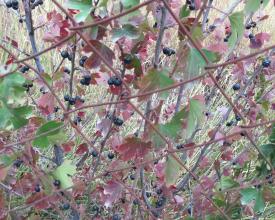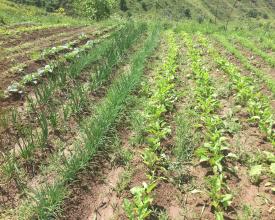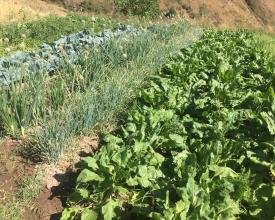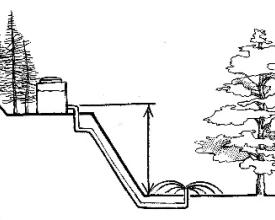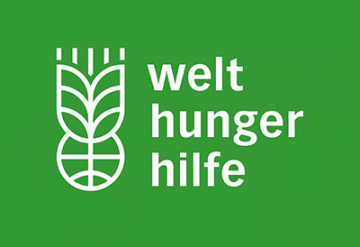
Sustainably managed irrigated annual crops
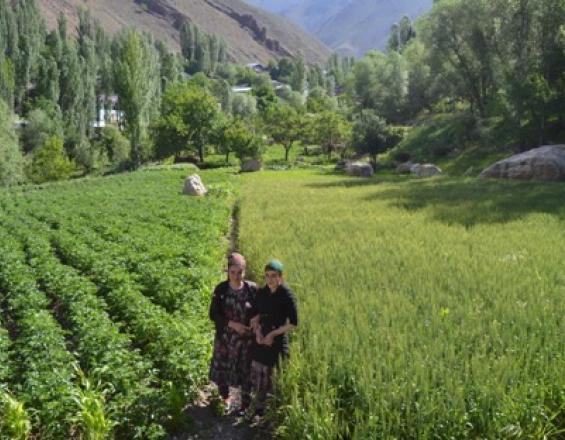
About 95 percent of the staple crop production in Tajikistan comes from irrigated land which underlines the importance of irrigation in cultivating annual agricultural crops.
The productivity of irrigated annual crops depends largely on the provision of ecosystem services, e.g. pollination, water, and soil fertility.
Irrigated annual crops are usually intensive cultures that make for efficient use of land resources and constitute artificial ecosystems that cannot make contributions to the maintenance and improvement of biodiversity and ecosystems services. To the contrary, they mostly focus on applying huge amounts of chemical inputs and in many cases use water ineffectively.
The sustainably managed irrigated annual crops focus on reducing hybrid seeds, chemical fertilizer, and synthetic pesticides.
Context
Challenges addressed
The following challenges are posed by the promotion of irrigated annual crops:
- Traditional soil preparation for annual crops which is based on ploughing the land is resource-intense, a wide amount of inputs such as fertilizers and pesticides is required.
- Irrigation systems require not only specialized infrastructures but proper management that reduces erosion and salinized soils.
- Moreover, the threat of high temperatures and low precipitations is concrete and associated with climate change.
Location
Process
Summary of the process
Fencing is the prerequisite for ensuring that irrigated annual crops will not be destroyed by domestic animals.
Contour ploughing prevents soil erosion and thus conserves the soil fertility which in turn is a condition for achieving a good harvest from annual crops.
Contour ploughing and water-saving irrigation techniques improve the water supply for the crops which allows getting a better harvest.
Building Blocks
Fencing
Due to large flocks of livestock, fencing often becomes necessary for annual crops, especially if the cultivated fields are located close to roads, or livestock corridors. There are several forms of fencing practised in Tajikistan. Fencing with mesh wire is effective but expensive. Unlike natural fences, mesh wire fences will not create additional income through fruit yields or timber.
Whenever it is possible, natural, local materials (e.g. branches, brushwood, stones, wooden sticks etc.) should be used for fencing. These materials are cheaper than mesh wire or concrete and offer habitats for beneficial insects and other pollinators. Living fences established from local trees and bushes, preferably with spines (hawthorn, cherry plum and barberry) are even more suitable as they contribute to biodiversity and provide firewood and wild fruits. They, however, may require protection and watering in the first years of establishment.
If stones are available on-site, fencing with stone walls may be considered as well. Natural stone walls are not only durable but also create habitats for pollinators, other insects and small mammalians.
Enabling factors
Many farmers have to constantly worry about having their fields entered by livestock passing through to summer pastures. This creates conflicts within the community and with herders. By fencing their fields the family members are relieved from this worrisome task of guarding their plots and the time can be used for more effective tasks.
Lesson learned
Fencing is necessary on most of the irrigated annual crop fields and farmers are willing to make their own contribution for fencing their plots. It worked well when the project contributed with the mesh wire and the farmers put the sticks and the labor force for establishing the fence. However, the project team recommends piloting sustainable fencing mechanisms or micro-credits to reduce the dependence on project inputs and hence to reach more farmers.
Contour ploughing
Contour ploughing should be used on steep slope areas. The land is ploughed perpendicular to the slope, alongside contour lines that curve around the arable land. Contour lines favor infiltration of rainwater as water run-off is stopped. So the risk of soil erosion and the formation of gullies is reduced and the availability of water for the annual crops is increased. The soil conserving effect of contour lines can be augmented by planting grass strips, bushes or hedgerows alongside them.
Enabling factors
Agricultural crops are suffering increasingly from climate change in Tajikistan; manifested among others by shifting rainfall patterns and higher temperatures during summer months, which increases water stress for the plants. Through contour ploughing, rainwater infiltration is improved which in turn increases the available water reserve of the soil and ensures better development of annual crops.
Lesson learned
Many farmers are convinced that contour ploughing is an adequate measure for reducing soil erosion and increasing the availability of water for their crops. However, most of them do not have a tractor of their own and have to engage agricultural service suppliers for preparing their land. The latter frequently do not plough following contour lines alleging that this is time-consuming and damaging to their engine. A possible solution could be that farmers interested in contour ploughing will purchase single axle tractors, which are relatively affordable and will allow them doing contour ploughing by themselves.
Intercropping
Intercropping is a planting technique that involves cultivating two or more crops at the same time on the same field. Intercropping will result in increased yields as the plants use the available space and nutrients more efficiently and help each other to develop. The associated crops should belong to different plant families, in order not to share the same pests and diseases and to have different requirements on soil fertility and nutrients and extracting them from different horizons of the soil. Intercropping creates biodiversity, which attracts beneficial and predatory insects. As flowering increases, intercropping also favors pollinating insects and thus beekeeping.
There are three basic classifications for intercropping: a) mixed cropping, which involves planting a variety of compatible plants together without any definite arrangement (eg. maize planted together with beans); b) row cropping or alley cropping, in which different crops are planted alongside each other in rows (eg. alternating rows of carrots and onions); c) temporal intercropping, in which a slow-growing crop is planted together with a faster growing one, which is harvested earlier, allowing the slow-growing crop to subsequently occupy the entire planting area (eg. potatoes and pumpkins).
Enabling factors
Intercropping increases diversity of products to be harvested and reduces the risk of complete loss of harvest by pests and diseases as these normally are host-specific.
Intercropping maintains soil fertility as nutrients are not emaciated unilaterally.
Intercropping increases biodiversity and thus beneficial and predatory insects are attracted.
Through diversified crops the flowering season is prolonged, which is favorable for beekeeping.
Lesson learned
Farmers in Tajikistan tend to plant crops to narrow, hence crops interfere with each other in a negative way; the weaker ones are suppressed, the harvest per plant is lower and partial, and the potential of intercropping is not used adequately. When intercropping species it has to be ensured that each of the involved species has enough space for growing.
The water demand of the associated crops should be similar to provide adequate water to each of the species.
Farmers are sceptical at times about intercropping, alleging that it will be difficult separating the products, e.g. oat and pea. Therefore, adequate mechanisms such as using different sieves for separating grains have to be introduced to the farmers.
Water saving irrigation techniques
Irrigation by gravity (furrow or surface irrigation) is the main irrigation technique used in Tajikistan for annual crops. In order to avoid erosion the irrigation should be made by furrows which are following slightly inclined contour lines. The water influx should be slow, so as to increase water infiltration into the soil and reduce the risk of erosion along the irrigation furrow. Furthermore, measures should be implemented to make irrigation by gravity more effective, e.g. by lining irrigation channels with plastic foil for reducing water loss through infiltration or by distributing the water to the furrows by plastic pipes for achieving a homogeneous allocation.
Special attention should be paid to avoid too much watering; excessive water should be evacuated properly as it can cause soil erosion, the formation of gullies or attract pests.
In a gravity irrigation system, it is crucial to break the soil surface between the furrows in order to destroy capillaries and thus preserve humidity.
More sophisticated and efficient irrigation techniques as drip and sprinkler irrigation are economically not viable in most cases in annual irrigated crops.
Enabling factors
Water is a scarce resource in Tajikistan and the situation is worsening with population growth and in the wake of climate change. Therefore, farmers are interested in implementing water saving irrigation techniques. The means of choice is improving irrigation by gravity as in most cases it is too expensive to install drip or sprinkler irrigation systems for annual crops.
Lesson learned
Many farmers are irrigating annual crops by gravity, letting the water simply flow downhill and are not aware that such a procedure causes erosion. They should be trained on implementing furrow irrigation following contour lines.
Impacts
Annual crops are important for generating income, ensuring food security, and if diversified to nutrition security.
Intensive agricultural systems are usually less shock-absorbent and carry a higher risk for pests. The approach here described will make the production more resilient to shocks and changes in climatic patterns. Further, diversified annual crop fields improve biological diversity of plants as well as insects, reduces the need and dependence on irrigation systems, and has less negative effects on adjacent ecosystems. In addition, soil degradation and erosion can be reduced and soil fertility increased with low-/no-tillage techniques and crop rotation.
Beneficiaries
The beneficiaries of the approach are farmers interested to cultivate irrigated crops in a way to contribute to the conservation and promotion of biodiversity and ecosystem services.
Story
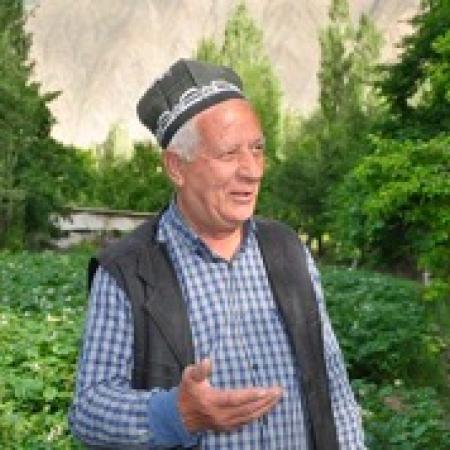
The door in the stone wall surrounding the whole area is open and reveals a lush green garden under shady fruit trees. The owner of this garden in Pokhut village, Zerafshan valley, Northern Tajikistan is Azim Choragabov. He is 65 years old. Since Tajikistan is covered mainly by high mountains, farming is restricted only to the valleys. Climate change leads to frequent droughts and mudslides which endanger the harvest and cause food insecurity and malnutrition. Even under these harsh conditions, agriculture is the main source of income for the growing population of Tajikistan – also for Azim. When strolling through the fields, he gently runs his fingers through the blossoming potatoes and remembers himself some time ago: "Before I used to let myself go and to consume everything thoughtlessly. So I wasted my time. Then I lost my son some years ago. After that, I searched for a deeper understanding of life and I got more aware of its inner value."
When he gained this insight, he changed not only his own behavior but his attitude towards his surroundings as well. Azim became more attentive towards the varieties of local plants and showed an increased interest in their specific qualities and benefits. This was when Azim decided to get involved and to take part in the project on "Biodiversity and Ecosystem Services in Agricultural Landscapes". With the seeds which were provided by Welthungerhilfe, Azim grows a mixture of plants; potatoes, beans, calendula, wheat, pumpkin - and horse bean. "In former times, people used horse beans a lot, it helps with diabetes. Now I started to grow it again to share it with the neighbours and to sell it."
He plans to contribute the horse beans he cultivates to the seed bank that shall be established in the framework of this project.
Now, when he is in his kitchen garden, Azim is totally absorbed in what he is doing. He is a serene man richly endowed with inner calm and composure. At times, it seems as if he was listening to his plants and flowers. And he passes on his knowledge and love for growing local plants to his six children who help him in the garden. While his grandchildren are playing in the garden, he faces the future with confidence and hope.

